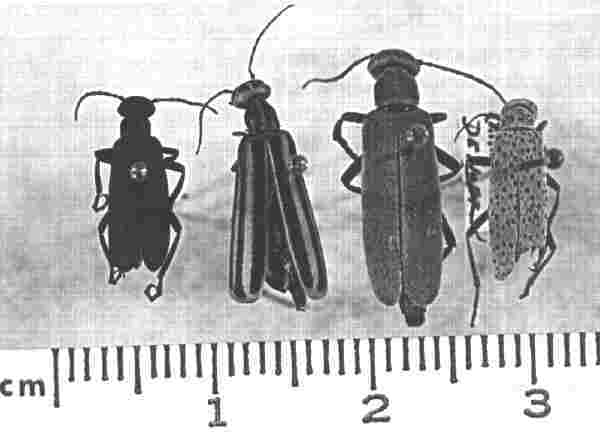Blister Beetle Poisoning in Horses
by Robert N. Oglesby DVM
Introduction
Introduction
»
Location and Description
»
Symptoms
»
Diagnosis
»
Treatment
»
Outcomes (prognosis)
»
Summary
»
More Info & Discussions
Blister beetle poisoning comes from ingesting alfalfa hay or cubes that are contaminated by the dead beetle. The beetles become trapped in the alfalfa during bailing and die. They remain poisonous indefinitely. The toxin, cantharidin, is a contact irritant that is absorbed by the intestines. Most of the clinical signs are caused by the irritating effects on the bowel, kidney, and heart. As little as a teaspoon of the beetles can be fatal to a horse. This article discusses the description, clinical signs, diagnosis, treatment and prognosis of this problem.
Location and Description
Introduction
»
Location and Description
»
Symptoms
»
Diagnosis
»
Treatment
»
Outcomes (prognosis)
»
Summary
»
More Info & Discussions
Blister beetles are a large family occurring throughout the U.S. with the exception of the West Coast. The Midwest is the most common area to have reports of this poisoning and it is the number one reported poisoning of horses in Texas for some years. They are also in southern Canada and northern Mexico. It seems the incidence of this problem is increasing and is most common in the late summer and fall.
The beetles occur most commonly in fields with flowering forages like alfalfa and clover but rarely may be in grass fields. The presence of weeds in adjacent fields seems to increase the incidence. The risk is greatest in hay that has been crimped, resulting in crushing the beetles, otherwise they tend to leave the bails.

Generally they are brownish green or yellow bugs some with distinct black stripes on their backs others can be plain or spotted. They are around a half inch to an inch and a half long. Their distinctive long necks, long antennae, and long bodies help distinguish them from other beetles. There are species of blister beetles that are not toxic and it will require a professional entomologist to sort this out.
Symptoms
Introduction
»
Location and Description
»
Symptoms
»
Diagnosis
»
Treatment
»
Outcomes (prognosis)
»
Summary
»
More Info & Discussions
You have just read the beginning of this article. To access the unabridged article
become a Member of Horseadvice.com! Your membership gets you instant access to this and over 600 articles on our site. Other benefits of your membership include participation in our discussion boards and access to our one button PubMed search tool for each topic.
Horseadvice can teach you to be a more knowledgeable horse owner which leads to a healthier horse and save you money. Really, we guarantee it.
Come Join Us!
 Generally they are brownish green or yellow bugs some with distinct black stripes on their backs others can be plain or spotted. They are around a half inch to an inch and a half long. Their distinctive long necks, long antennae, and long bodies help distinguish them from other beetles. There are species of blister beetles that are not toxic and it will require a professional entomologist to sort this out.
Generally they are brownish green or yellow bugs some with distinct black stripes on their backs others can be plain or spotted. They are around a half inch to an inch and a half long. Their distinctive long necks, long antennae, and long bodies help distinguish them from other beetles. There are species of blister beetles that are not toxic and it will require a professional entomologist to sort this out.